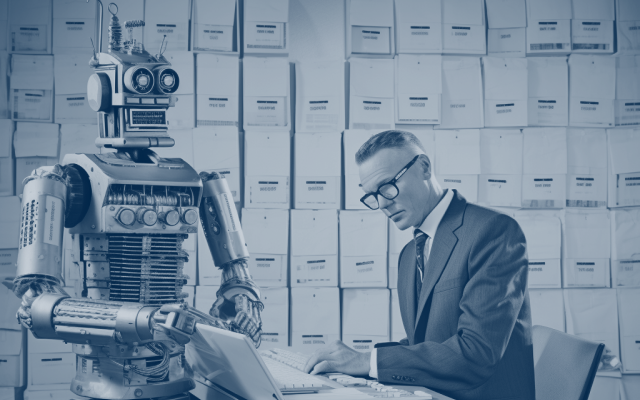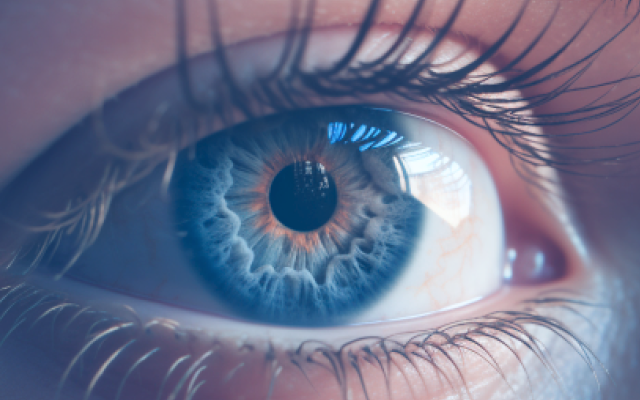The Apple Vision Pro was released on February 2, 2024 in the USA. On this day, stores were filled with loyal Apple fans standing in line, waiting to get their first glimpse of this new Apple product. Over the years Apple built a large fanbase of people wanting to buy all of their products, from iPhones to watches, and preferably the latest version. This loyal community is proven once again with the success of the Vision Pro, with nearly 200.000 headsets sold for $3499, within a month of the release. The Vision Pro distinguishes itself from other VR/AR headsets through spatial computing in the device, the joint space of Virtual Reality and Augmented Reality, focusing on day-to-day productivity tasks. The Vision Pro’s quality of spatial computing is unbeatable with current similar devices. Apple focused on providing a mixed reality rather than fully emerging you into a digital world. For example, by placing the videos you're watching in your living room rather than the video taking up the whole space, it's like you're watching a TV screen. But with the Vision Pro focused on daily productivity tasks, it asks, will the Apple Vision Pro become a standard in our day-to-day work environment?
The Vision Pro's compatibility with your workspace
Features like setting up your workspace on the Apple Vision Pro can benefit your day-to-day work life. A positive aspect of the device is the complete privacy of what you're doing on your screen. Your company's secrets will be completely safe, no matter if you're at home or on the road. Furthermore, moving and resizing the apps allows you to work with multiple apps simultaneously in every way you want. Lastly, integrating the Vision Pro into your company will be easy. Thousands of apps are compatible with the device at launch; think of Slack, Notion, or Todoist. (Source: Apple). While all your favorite apps may not be present now, just give it some time! The technology for creating Vision Pro apps is the same as the current IOS apps. Developers can convert their apps into a Vision Pro-accessible version quite easily. In fact, IOS and iPadOS apps can work on the VisionOS by pressing one button in the settings.
Issues with weight, size, and battery
This all sounds great, and it sketches a reality in which the Vision Pro will replace our MacBooks. However, this may not be the case. The Vision Pro still has flaws, and it is essential to acknowledge that this is only the first device released. Many adverse reactions emerged around the size of the device. It is too big; not only does it look odd, but the pressure on the face, due to the size and weight, is too excessive to allow a usage longer than an hour (Source: Digitimes Asia). After hearing complaints about the high pressure on the face Apple decided to include a double loop band with the purchase of the device. However, many users say it only partially helps the problem.
The battery only lasts up to two hours (Source: Apple). It would be great if your workday consisted of two hours, but this is different from the reality. Instead, it's a desired situation that most likely will not be reality. Additionally, the Vision Pro uses an external battery. Whilst this might have some environmental advantages, it is extra weight to carry besides the device. Hence, implementing the Apple Vision Pro into the workplace requires some work. Right now, the Vision Pro is more useful as an additional tool than replacing our current devices.
A starting point for a new technology wave
However, this version of the Vision Pro can be seen as a starting point of a new generation, a new wave of technology. Once newer versions are released, the Vision Pro market will also expand. Newer versions will result in a lower price point, and more recent versions will also improve the weight, size, and battery life issues the prototype is experiencing. Perhaps VR/AR headsets are now in the first stage of becoming more mainstream because of the release of the Apple Vision Pro.
It isn't easy to picture a world where everyone will be wearing the Apple Vision Pro. But, when the iPhone was first introduced, nobody expected the pocket-sized phone to be integrated into our day-to-day lives as much as it is now. Looking back at the release, people thought the touchscreen was a "bad idea" that was bound to cause significant problems (Source: Engadet). Who knows, maybe in 10 years, massive glasses will be a fashion staple, and everyone will walk around town with a Vision Pro.
The Apple Vision Pro might be the first step into a new work environment that will look different in a few years. But before this is a reality, Apple needs to work on the device's weight, size, and battery to make it user-friendly for the 9-5 workdays

